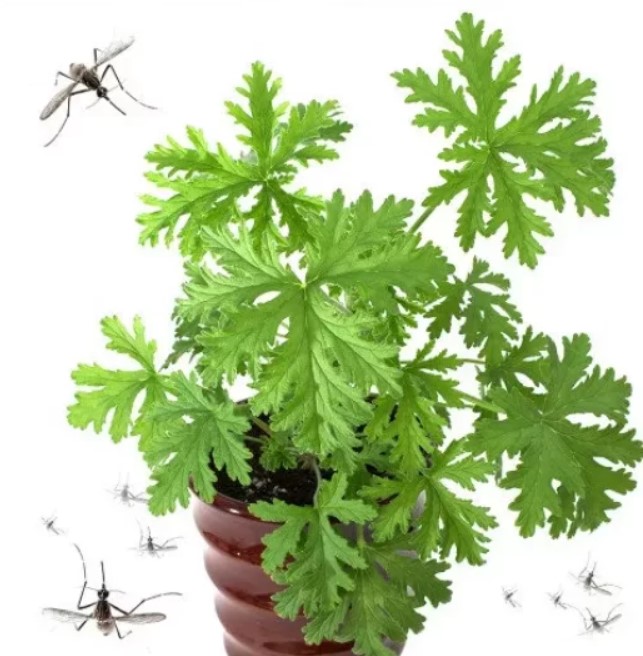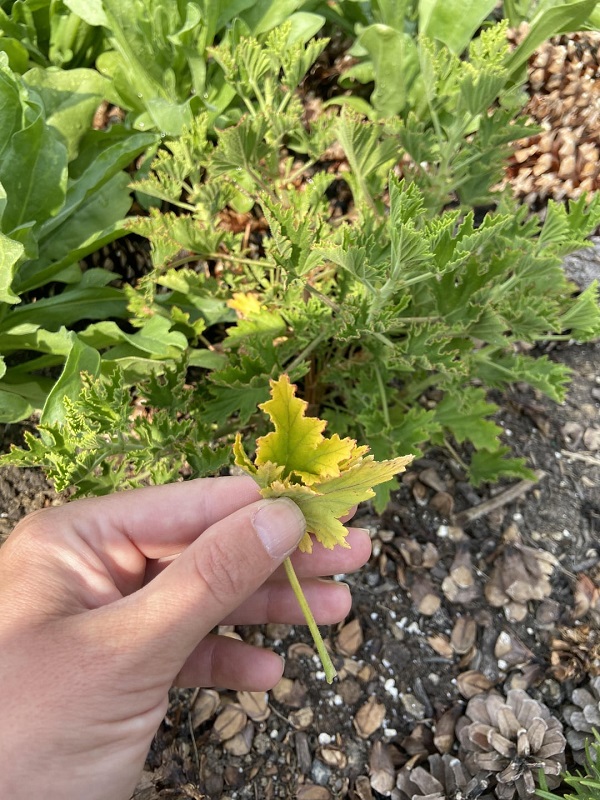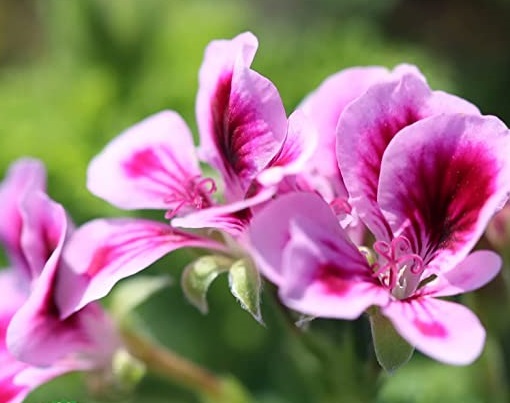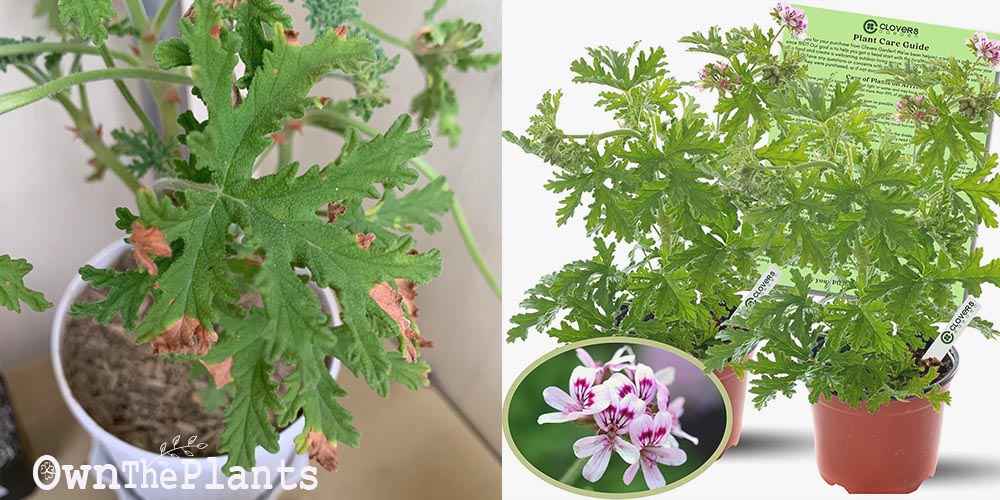The Citronella Plant is one of the well-loved garden plants due mainly for the citrusy scent. It also produces lovely lavender flowers and has a foliage that looks like parsley.
On top of that, this plant is also thought to repel mosquitoes. There is really no wonder why this plant is a prized plant.
However, no matter how special a plant is, problems still can strike it down. You might find yourself seeing your once vibrant and bouncy Citronella Plant, become weak, limpy, and on the brink of dying.
Worry no more because, in this article, we will guide you on how to nourish back your dying Citronella Plant to good health.
We will also give you more background information on what might cause it, why it is dying, and how to keep it healthy moving forward.
Your journey to plant redemption starts here!
Getting to Know Citronella Plant
The Citronella Plant, also called Citrosa Geranium, and Mosquito Plant Geranium, is scientifically known as Pelargonium ‘Citrosum’.

Although the common names suggest the existence of citronella, a common active component in insect repellents, the plant does not actually have it. It only produces a scent similar to citronella when its foliage is crushed.
It was once claimed that Citrosa Geranium takes these characteristics from genes of two different plants – the African Geranium and the Chinese Citronella Grass.
However, this was considered false as the plant truthfully appears to just be a cultivar of Pelargonium graveolens.
How to Know If A Citronella Plant Is Dying?
There are several indications that will help you know if your Citronella Plant is dying. If you see any of these manifestations in your plant, then you should consider yourself warned.
Here are the top 3 indications:
- Your Citronella plant has brown leaves.
- Your Citronella plant has yellowing leaves.
- Your Citronella plant has discolorations or spots.
How to Save A Dying Citronella Plant?
As plant lovers, we dread when we have a dying plant in our hands.
If you have a Citronella Plant that is not thriving well and is on the brink of death, here’s what you can do to salvage it.
1. Check your plant and see if there are still living parts.
Closely assess your Citronella plant as there could still be a chance that it can be revived, no matter how low or high it may be. Check for any green living parts.
Also, check the roots if they are still white and plump. These are good indications that it is not yet the end for your Citronella plant.
2. Check if your plant is being overwatered.
Overwatering is the #1 problem of all plant owners. This is the easiest mistake to commit since we always think that plants love water.
That is true, but definitely not in excess. Overwatered plants are susceptible to many problems that will cause them to be dying.
An overwatered Citronella plant will have yellow or brown, wilting leaves. The soil is excessively moist and roots are mushy brown.
If you observe these, then you need to rectify your watering routine and change the potting mix.
3. Assess if you have properly watered your plants.
An extremely dehydrated plant is a dying plant. Water is very essential to a plant’s life since it enables them to perform metabolic functions.
The lack of water means a plant could not do what it needs to do to basically live.
An underwatered Citronella plant would have brown, crispy leaves with brown tips. Its soil will also look cracky and pull away from the pot’s edges.
If you observe these, soak your plant in water for a couple of hours. The plant will regain its stature in time.
Moving forward, monitor the soil’s moisture always, either by a moisture meter or just using your fingers. If the soil is still moist, you may skip watering for a few days. If it is already dry, then it is your cue to water your plant.
4. Discard all the dead foliage.

Snip off all the brown and dead leaves of your Citronella plant as they do not necessarily benefit your plant anymore.
Use a sterile pair of any cutting material, such as scissors or pruning shears. If possible, you can also just pinch off these leaves using your fingers.
Remember to clean the tools and hands afterwards to wash away possible pathogens that may have caused the problem of your Citronella Plant.
Throw the dead foliage too properly. This will avoid the spread of these harmful pathogens to other plants or to your entire garden.
5. Prune the stems.
Like what you did to the dead foliage, trim away dead parts of the stems until the green, living stems only remain. You may also opt to change the pot and the soil mix you’ve used to have an overall fresh start.
Do not expect to see changes right away, since it could take weeks before positive results can be seen. This is the part where you test your patience and commitment to your plant.
6. Assess the light conditions.
Improper light conditions for a long period of time can also cause your plants to die.
Light, like water, is very essential for plants to make their own energy. Without sufficient light, your plants could not photosynthesize and make their own food.
Your Citronella Plant thrives best in a partly shaded environment that allows sunlight to penetrate. It does not like to be exposed to direct sunlight for a long period of time.
Check where your plant is located and assess whether you need to move it to a new spot.
7. Check the level of humidity.
A low level of humidity that is way below the optimum level for your Citronella Plant is also detrimental.
If you see your plant wilting, with foliage that is shriveled and brown, then most likely the air is too dry.
The Citronella Plants love moderate humidity levels. Raise the humidity by misting your plants frequently, especially during summer seasons.
You can also group your plants together as it will also raise the moisture level in the air.
8. Ensure your Citronella is getting essential nutrients.
When a plant is having nutrient deficiencies, it cannot perform its primary metabolic functions and can be malnourished if left untreated. A malnourished plant has weak stems or shows leaf discolorations.
If you see these symptoms from your Citronella Plant, revive it by feeding a well-balanced fertilizer. Do this twice a month over spring and summer, and lessen it to once a month during winters.
Repotting your plant with a fresh soil mix can also help you give your plants the right nutrients as nutrients in the soil gets depleted over time.
9. Wait for a month and observe for a positive result.
After you give your dying Citronella plant the essential care needed to revive it, be patient and wait for at least a month to see results.
Nursing a dying plant back to good health is a timely process. Good things come to those who wait, as they said.
If for unfortunate reasons, your dying plant could not be revived anymore, you can still use it for one last purpose. Turn it as a compost and let it become a natural fertilizer to the rest of your garden plants.
Why Is My Citronella Plant Dying?
In order to solve a problem, you must identify its cause first and target it.
There’s no use fixing anything if it does not eliminate the source of the problem. The issue will just resurface time and time again.
This can be said with fixing a dying citronella plant. You must first identify the cause so you can start doing the best course of action to save it. Remember that different causes require different solutions.
Here are the top reasons why your aromatic citronella plant is not growing well:
Excessive Water
Again, your Citronella Plants do not tolerate excessive water even though it needs a lot of moisture.
It is very easy to overwater your plant, so always be conscious when you think about watering it.
Excessive Sunlight
Your Citronella Plant needs a bright but filtered light to thrive. It becomes weak and if exposed to direct light or extreme shade for a long period of time.
Soil Quality
Soil quality contributes a lot to the dying of your Citronella plants. A soil that does not aerate and drain well could easily lead to bacterial and fungal diseases.
More so, soil that has poor nutrients can make your plants grow slower and weaker over time.
You might like: How To Save A Dying Alocasia? (7 Causes + Solutions)
How Do You Keep Your Citronella Plant Healthy?
Proper care and attention will ultimately give you a bouncy, vibrant Citronella Plant. When your plant is flourishing and thriving, it means you are being a good plant caretaker.
We outline the steps for you to ensure you have a well-scented, healthy, and bouncy Citronella plant:
- Allow your plant to have 6 hours of bright, filtered light a day.
- It is better to maintain the soil of your plant slightly arid, and only water when the top inch begins to dry.
- Always use a pot that has a lot of drainage holes.
- Maintain a temperature between 59°F to 70°F.
- Prune your plant twice a month to avoid cramping of foliage.
What Is The Lifespan of A Citronella Plant?
The Pelargonium Citronella Plants are perennials that can survive all-year round, especially in USDA Zones 10-11. They bloom during the entire summer season. The blooms are small clusters of pink-lavender flowers which have a deep red brush on the top petals.

The plant grows to be an upright bush to a maximum height of 24 inches and a width of 12 to 18 inches. They are a perfect addition to cottage gardens, garden beds, borders, or containers.
Just a reminder that although these plants are lovely and smell nice, they can be toxic to your pets and some farm animals like your horses.
Final Thoughts
Your Citronella Plant is truly a lovely plant, not just for its visual aspects, but all the more for its aromatic and citrusy scent. However, remember that like most plants, it is also prone to plant problems and could die if not treated right away.
It is important to always check your plants for any problem it might have. It is always better to cure a plant in the earlier stage of the problem before the situation becomes worse.
They may not be able to talk but plants always let you know when it is happy, or when it is experiencing a difficult time. You just know how to listen to them with your own eyes.
Let us hear about your experiences with Citronella Plants in the comment section below. The whole world would love to hear from you!
